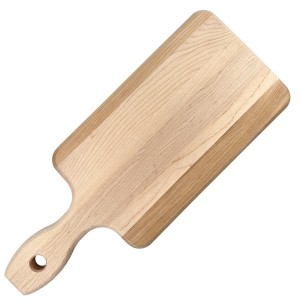Blog
The Appeal of Paddle Cutting Boards in Resin Art
The appeal of paddle cutting boards can be timeless in how they bring function into design in such a sophisticated yet functional way. Their broadly flat shape, narrowing into a handle, makes them versatile tools within the kitchen. Still, they have recently found a new role beyond slicing and dicing—they are one of the most used canvases within resin and epoxy art today. But here comes the question: are paddle cutting boards really ideal for this sort of artistic enterprise?
The Surface: A Canvas of Special Characteristics
Of all, the surface is the most important while creating resin and epoxy artwork. The smooth surface of a paddle cutting board is an invitation in itself. Theoretically, the flatness allows for an even spread of the resin, providing artists with a clean slate to work on. However, the shape of the board does bring in some complexities.
The tapering, elongated shape of paddle cutting boards—the very feature that defines it—sets up a less-predictable canvas compared to a standard rectangular board. Resin has a flowing property to it; it flows like liquid in accordance with gravity and the shape of its container. This means it may pool in areas, particularly around the handle, on a paddle board, thus leading to some uneven distribution. This might be quite a big challenge for the beginner, whereby it becomes hard to get a consistent finish.
On the other hand, such challenges can stimulate experienced artists. The irregularities in the paddle cutting board surface can prompt artists to start working on new techniques that then can come up with designs and innovations not achievable on a conventional surface.
The Handle: A Design Element or an Obstacle?
The handle is the most distinctive feature of a paddle cutting board and, from the point of view of resin art, the most troublesome. From a practical standpoint, the handle disrupts the smooth flow of resin that may present issues regarding pooling or incomplete coverage. This is frustrating when a perfect finish is desired.
However, it could also be viewed as an opportunity. Artists can further integrate the handle into the design by utilizing it as a form of demarcation or focal point of sorts. For instance, the handle could be where a different resin color is applied, which then creates great contrast with the rest of the board. Alternatively, embellishments such as metallic flakes or pigments can be concentrated around the handle to turn what might be an obstacle into a real highlight of the piece.
The Material: Wood and Its Interaction with Resin
Paddle cutting boards are typically fabricated from durable, naturally beautiful hardwoods like maple, walnut, or cherry. Wood, however, has its share of issues when used as a base for resin art. Wood is porous; it can absorb the resin, which may later cause uneven finishes or result in warping to the board over time if it is not sealed.
In this essence, sealing the wood before applying resin makes a huge difference in avoiding such issues. If the board is well-sealed, the resin will stay on top, so you can achieve a glossy, smooth finish. However, even with great prep work, the natural characteristics of the wood take over and sometimes have the final say. From differences in grain to color and texture, no two-paddle cutting boards will ever react to resin in an identical fashion.
To some, that is a drawback. They may opt instead for an MDF or acrylic—the uniformity of the surface can provide better control over the result. But to others, this is exactly what makes wood such an interesting medium: the natural variation. Subtle differences in how each board interacts with resin can create one-of-a-kind pieces reflecting the singularity of both the artist and the material.
Paddle Cutting Boards: A Marriage of Art and Craft
At the end, suitability will depend on what you’re trying to achieve. If you want to do something very basic and highly predictable, a standard rectangular board may be more in your comfort zone. If you like the frustrations, the possibilities associated with working on a more complicated surface, the paddle cutting boards offer another kind of canvas.
Their form, basically a broad surface with a narrow handle, demands balance between precision and creativity. How resin flows on these boards can be quite unpredictable; sometimes, it turns out really beautiful and unexpected—but only if you’re ready to embrace the form’s and material’s quirks.
The Final Verdict: Are Paddle Cutting Boards Ideal?
So, are paddle cutting boards ideal for resin and epoxy art? Yes, if you’re that kind of artist who thrives amidst challenges and innovations. These boards combine a degree of structure with spontaneity in such a way that the very elements which complicate their use also increase their artistic potential.
To those who accept the challenge, paddle cutting boards become far more than kitchen utensils—very fine artistry, each piece individual to itself and the board at hand. The secret lies in the way they are approached—not simply as a surface available to work on but as an integral part of the creative process where material, form, and insight by the artist express themselves in a work that could not have been more special.

